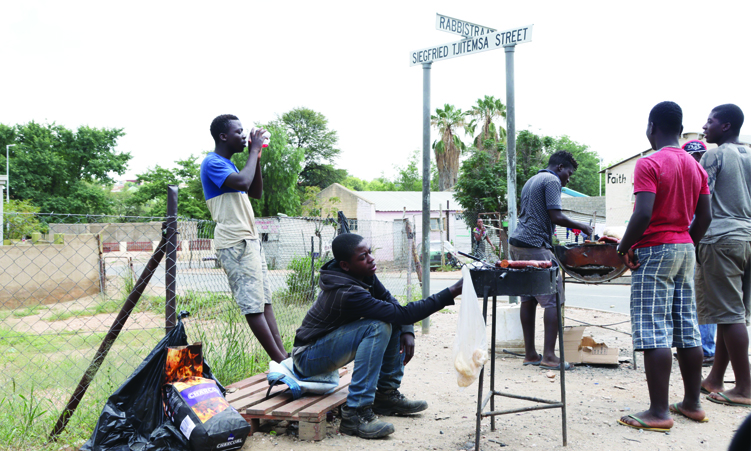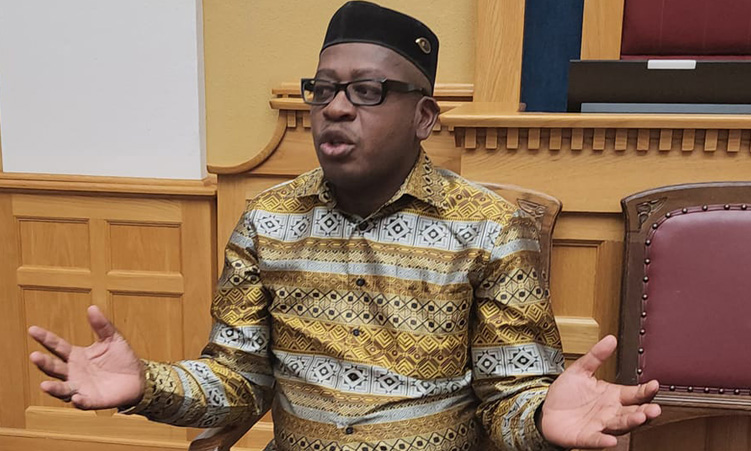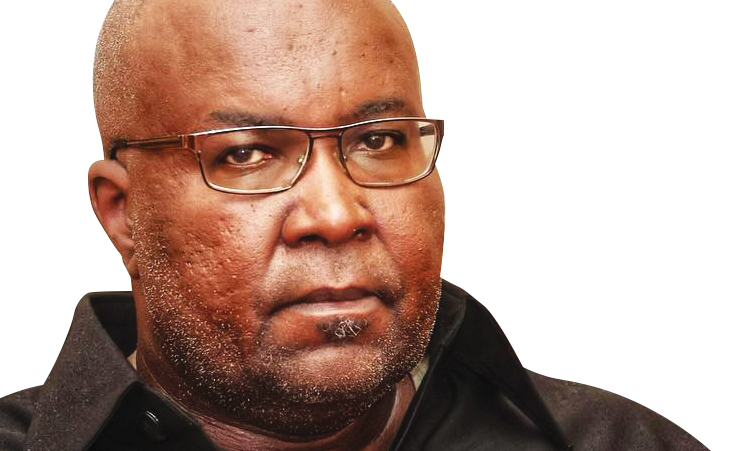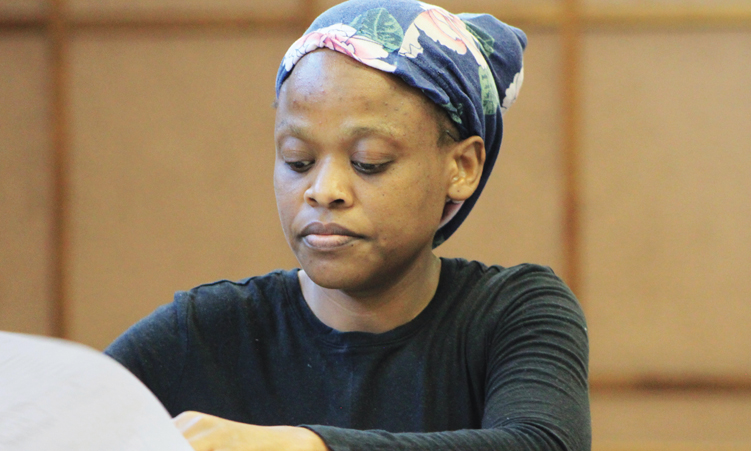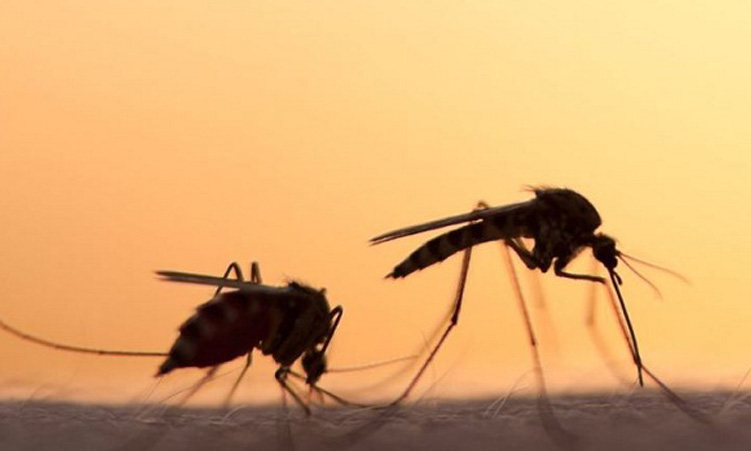The United Nations Population Fund (UNFPA) says 43% of the county’s population are experiencing multidimensional poverty.
According to the UNFPA 2022 annual report, the Gini coefficient index shows that income inequality in Namibia stands at 57,2%.
The Gini index is a summary measure of income inequality, which incorporates the detailed shared data into a single statistic, summarising the dispersion of income across the entire income distribution.
The report further states that the unemployment rate stands at 33,4%, with youths aged 15-34 years taking up 46,1% while women take up 48,5%.
It further states that 46% of households are female-headed, while 41% are male-headed households.
However, economic analyst Arney Tjaronda said he agrees with the UNFPA to a certain extent.
Tjaronda is not surprised by the percentage increase in poverty levels in Namibia, as the cost of living has drastically increased while salaries remain low.
“However, I am looking forward to data from the NSA (Namibia Statistics Agency) census that will take place from 18 September to 3 November. Perhaps then we will see the bigger picture on this trifling situation,” Tjaronda said.
He added that the most concerning issue is the high unemployment in the country and the job market that is unable to absorb the high number of graduates.
“There is limited access to basic services that can hinder socio-economic progress. Government spending should be more focused on development expenditure rather than operational expenditure. However, that is not the case here because it is the other way around,” he said.
According to Tjaronda, the education and skills gap in Namibia is one of the drivers in the widening gap. There are limited opportunities for young people to participate in economic activities.
“My best guess is to expand the manufacturing sector, which has the potential to employ more people in the country,” he added.
The Economic and Social Justice Trust’s Rinaani Musutua said the government is not able to provide decent livelihoods for Namibia’s small population of 2,6 million.
Musutua said if the population increases, it means that Namibia will have more societal problems.
“Hence, the government must heavily invest in contraceptives with minimal risk to women and girls. For that young population it has, the government must make sure that it invests properly in an education system that encourages entrepreneurship, which encourages and provides entrepreneurs with starting capital,” she said.
She added that this is because it is impossible for the country to absorb such a youthful population into meaningful employment.
“If that is not done, we will continue to be plagued by high unemployment, leading to even more poverty. Today’s youth is the future workforce and the government must invest in the youth’s human capital development if we are going to have a productive workforce in the future,” Musutua said.
Musutua said to avoid future social problems, one must solve the problems we currently have to avoid carrying them into the future.
“To safeguard our youthful population, the government must strengthen Namibian families through improving wages. Human capital development starts with getting rid of poverty,” she said.
Musutua said if the government lets poverty spiral out of control, as it has, the country will be plagued by social ills such as gender-based violence, crime, school dropouts, teenage pregnancies and HIV infections.
“One cannot have a productive nation under such social conditions. Poor social conditions lead to a dysfunctional society plagued by social unrest, which is a threat to our survival,” she said.
Musutua added that the government must improve people’s current living conditions if it wants to be able to create a peaceful society in the future.
YOUTHFUL POPULATION
According to the report, Namibia has a population of 2,64 million of which 48,64% are males, while 51,36% are females.
Young people under the age of 30 years make up 64,36%, while children aged 10 to 24 years make up 30% of the country’s population. UNFPA also reported that the average life expectancy in the country is 64 years, with males having an expectancy of 53 years and females 61 years.
MATERNAL DEATHS
The report further states that Namibia records 215 maternal deaths per 100 000 live births. It further says 93% of pregnant women in Namibia access antenatal care (ANC) services, of which 9-in-10 women receive ANC services from a medical professional.
“In 2022, UNFPA and its partners remained committed to supporting the government reduce maternal deaths, while prioritising the most vulnerable women,” the report reads.
UNFPA said last year 405 unsafe abortions were averted due to the use of modern methods of contraception, while five maternal deaths were also averted.
FAMILY PLANNING
According to UNFPA, the country has a 3,3% total fertility rate and 58% contraceptive prevalence rate, while the national teenage pregnancy rate stood at 19% last year.
“Access to safe and voluntary family planning is an inalienable human right that cannot be denied. In 2022, UNFPA continued to work with the government and partners to make this a reality in Namibia by providing strategic support to the national family planning programme and ensuring universal access to quality services for all,” UNFPA said.
According to the report, UNFPA procured reproductive health commodities for public health facilities, enabling 9 125 women to access the contraceptive methods of their choice. Through this support, 4 237 unintended pregnancies were averted.
The organisation found that there is a 12,6% HIV prevalence rate among people aged 15-64 years. The report further shows that 31% of new infections among young people is among pregnant women 15 to 49 years.
“UNFPA supported partners to enhance delivery of sexual and reproductive health, sexual and gender-based violence, and HIV services through static and mobile outreach clinics,” the report says.
During mobile outreaches last year, 21 347 young people including 406 key populations were equipped with information and services to help them make informed decisions, says the report.
Additionally, 4 090 young people were reached through condom campaigns, and 156 322 male and female condoms were distributed during the campaigns.
“A total of 5 708, of which 3 453 are young people, were tested for HIV, with 33 people tested positive and referred for treatment,” the report reads, adding that 285 people were enrolled in pre-exposure prophylaxis (Prep), of which 138 were young people. more than 24 young people were treated for sexually transmitted infections.
Stay informed with The Namibian – your source for credible journalism. Get in-depth reporting and opinions for
only N$85 a month. Invest in journalism, invest in democracy –
Subscribe Now!




